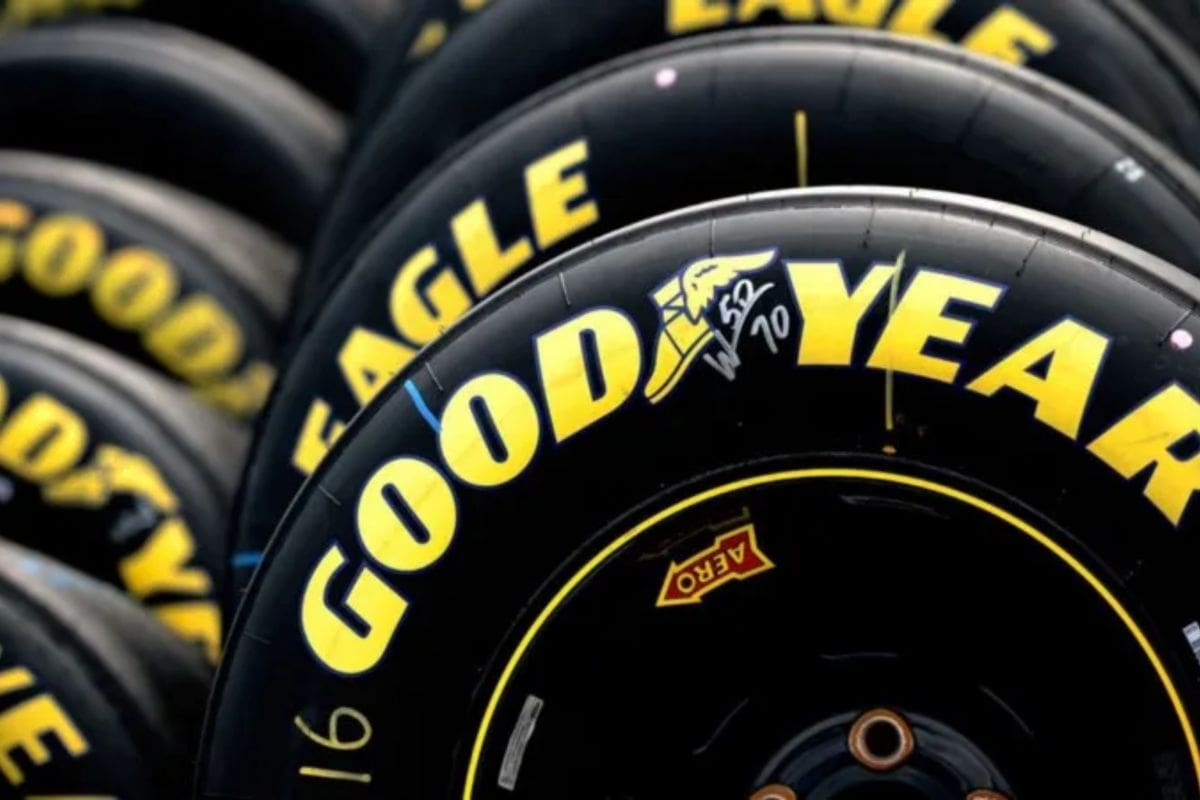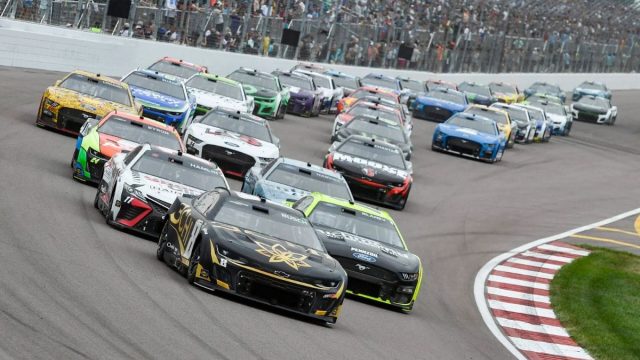Goodyear’s New Tire Strategy: As NASCAR struggles with mounting criticism regarding tire performance on short tracks, Goodyear’s calculated response presents a critical moment in the sport’s evolution. The tire supplier’s commitment to leveraging data analytics for developing improved tire compounds reflects a subtle understanding of the intricate relationship between equipment and racing dynamics. This initiative not only targets the pressing concerns of drivers and fans but also raises questions about the broader implications for competitive integrity and race tactics. What specific adjustments will emerge from this partnership, and how might they reshape the landscape of short-track racing?
Key Highlights
- Goodyear is actively enhancing tire durability specifically for short-track racing to address performance concerns and wear issues.
- Collaboration between NASCAR and Goodyear is vital in developing tires that respond effectively to varying track conditions.
- The introduction of softer and harder tire compounds will provide teams with strategic options to improve competitiveness during races.
- Data analytics are being utilized to inform tire development, ensuring teams can optimize tire usage effectively.
NASCAR’s Short-Track Challenges and Goodyear’s Response
NASCAR’s struggle to improve short-track racing has prompted important scrutiny of tire performance, leading Goodyear to investigate creative solutions to meet the demands of drivers and teams. The introduction of the Next Gen car has intensified these challenges, as its design has not fully aligned with the unique dynamics of short-track racing. The tight confines and varying surfaces of these tracks present notable obstacles, exacerbating issues such as tire wear, grip, and overall performance.
Drivers and crew chiefs have voiced their concerns, attributing some of the shortcomings in race quality to the tire compounds currently in use. With Richmond Raceway on the horizon, NASCAR’s decision to allow teams to choose between two tire compounds marks a notable shift in strategy and a response to ongoing criticism. This unprecedented flexibility may provide teams with the opportunity to tailor their setups more closely to their vehicles’ performance characteristics and the track conditions.
Goodyear’s commitment to refining the short-track tire package is vital, as highlighted by Mark Keto, NASCAR project manager for Goodyear. His acknowledgment of the need for improvement indicates a collaborative effort between NASCAR and the tire manufacturer, aiming to improve the overall racing experience.
As the sport moves forward, the focus will likely remain on developing tire solutions that not only meet the expectations of drivers but also contribute to more competitive and exciting races at short tracks. The ongoing dialogue between stakeholders will be imperative in addressing these challenges effectively.
Goodyear’s Ongoing Efforts to Improve Short-Track Racing
Goodyear is actively engaged in refining tire solutions specifically designed for short-track racing, consistently responding to the challenges posed by the Next Gen car and the unique demands of these venues. The collaboration between Goodyear and NASCAR has intensified as both parties seek to address the prevailing issues that have plagued short-track events, especially highlighted during the recent races.
“We’re already looking forward to the next race. We’re building tires for the races in early September now and moving on with those. Also, we have been really busy, we have a Martinsville Cup coming up, looking at some of the short-track stuff that we have been working on. We have a Martinsville Cup coming up, I believe it’s on a Tuesday and Wednesday, right after Michigan, so that’s some of the stuff we have been busy with.” – Keto
- Tire Durability: Improving the longevity of tires to withstand the rigorous conditions of short tracks, which often lead to excessive wear and degradation.
- Tire Performance: Optimizing grip levels to guarantee competitive racing while allowing drivers to display their skills in tire management.
- Data-Driven Insights: Utilizing analytics from recent races to inform tire development, assuring that upcoming races benefit from real-time performance feedback.
- Adaptation to Track Conditions: Creating tire compounds that are responsive to varying track conditions, which can drastically change due to weather or track surface wear.
Mark Keto’s recent comments underline Goodyear’s proactive stance, indicating that they are already developing specific tire solutions for upcoming races, such as the Martinsville Cup.
The tire manufacturer’s commitment to innovation in this area is critical, as it not only seeks to improve the on-track experience but also aims to restore the competitive integrity of NASCAR’s short-track events.
The Impact of Tire Choices on Richmond Raceway
The recent introduction of multiple tire options at Richmond Raceway reflects a tactical shift aimed at enhancing the competitive landscape of short-track racing. By allowing teams to select between a softer, less durable tire and a harder, more durable tire, NASCAR is fostering unpredictability and planned depth in race dynamics. This change could potentially address longstanding criticisms about single-file racing, especially as teams will need to assess tire performance and longevity in real-time.
Incorporating a 45-minute practice session allows teams to evaluate both tire compounds, enabling them to fine-tune their strategies before the race. While qualifying must be conducted on prime tires, teams can choose any compound during the race as long as they do not mix them. This flexibility is likely to lead to varied racing strategies that could create overtaking opportunities, ultimately enhancing the viewer experience. The impact of these tire choices at Richmond could be notable, as teams utilize their understanding of tire wear and track conditions to optimize their performance and competitiveness throughout the event.
The Motivation Behind the Two-Tire Strategy
Implementing a two-tire strategy at short-track venues is seen as a crucial step toward improving competition and driver engagement during races. This tactical approach not only addresses tire management but also fosters an environment where teams must innovate and adapt. The motivation behind this tactic is rooted in several key factors:
- Tire Management: With higher-than-normal tire wear, drivers are compelled to conserve and tactically utilize their tires, leading to more competitive racing scenarios.
- Dynamic Racing: By introducing variations in tire strategies, races become less predictable, allowing for more overtakes and excitement, which captivates fans and drivers similarly.
- Team Strategy: The two-tire approach encourages teams to devise unique strategies, promoting cooperation between drivers and crew chiefs to optimize performance throughout the race.
- Improved Viewer Experience: When drivers face the challenge of tire management, it often results in thrilling finishes, which elevates the overall viewer experience and keeps audiences engaged.
NASCAR’s efforts to replicate the successful tire management seen at Bristol Motor Speedway at venues like Richmond Raceway reflect a commitment to improving the short-track package. As Elton Sawyer noted, the goal is to guarantee that teams are placed in scenarios where tire conservation is fundamental.
“This past year, it gave us the chance to try something with tires, and we’re working really hard in NASCAR as well as the folks at the R&D center to improve the short-track package. We didn’t get the results at Wilkesboro that we were hoping for, with a very similar opportunity that we had at Bristol where we did see results, and even at Iowa where we did as well. Any time we can put our teams in a position where they have to manage tires, we really see some great racing and we see an entertaining race, so that’s our goal going into Richmond.” – Sawyer
Historical Context and Future Implications
Understanding the historical context of tire strategies in NASCAR reveals both the challenges faced and the potential for future improvements in short-track racing dynamics. Traditionally, NASCAR’s approach to tire management has been relatively rigid, with limited options for teams to adapt to varying track conditions. The initial testing of multiple tire compounds during the 2017 All-Star race highlighted the limitations of this tactic, as the lack of notable speed differentiation failed to deliver the excitement fans anticipated.
As NASCAR prepares for the upcoming Federated Auto Parts 400, the stakes are inherently higher due to its points-paying nature. Teams are now adopting a dual approach, relying on standard tires for fuel runs while utilizing the softer compound as a calculated maneuver to gain immediate track positions. This shift in strategy indicates not only an adaptation to contemporary racing demands but also a willingness to innovate in response to fan and competitor criticisms regarding short-track racing.
Looking ahead, the success of the Richmond Raceway experiment could pave the way for broader acceptance of tire variability in NASCAR. If executed effectively, the introduction of multiple tire compounds could improve competition, drive tactical depth, and ultimately revitalize fan engagement.
However, the effectiveness of this tactic will hinge on ongoing collaboration between NASCAR and tire suppliers like Goodyear, ensuring that the evolution of tire technology aligns with the sport’s unique challenges. The future implications of these developments could redefine how teams approach racing, making tire strategy a crucial element of competitive success in NASCAR.

News in Brief: Goodyear’s New Tire Strategy
In addressing the challenges faced by NASCAR’s short-track racing, Goodyear’s commitment to developing more durable and responsive tire compounds demonstrates a proactive response to feedback from teams and fans.
The emphasis on data analytics to inform tire choices is essential for enhancing competitive dynamics while mitigating concerns about performance and wear.
As these efforts unfold, the potential for more thrilling and unpredictable races at venues like Richmond Raceway becomes increasingly viable, shaping the future of NASCAR racing.
ALSO READ: Goodyear’s New Option Tire in Richmond Set to Transform NASCAR Racing


